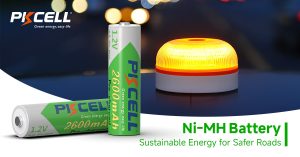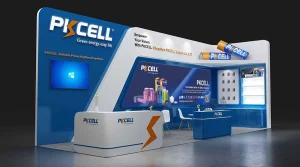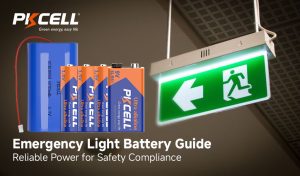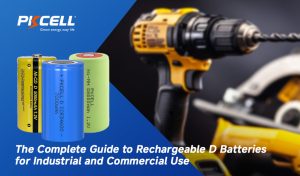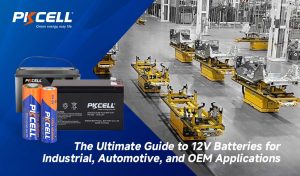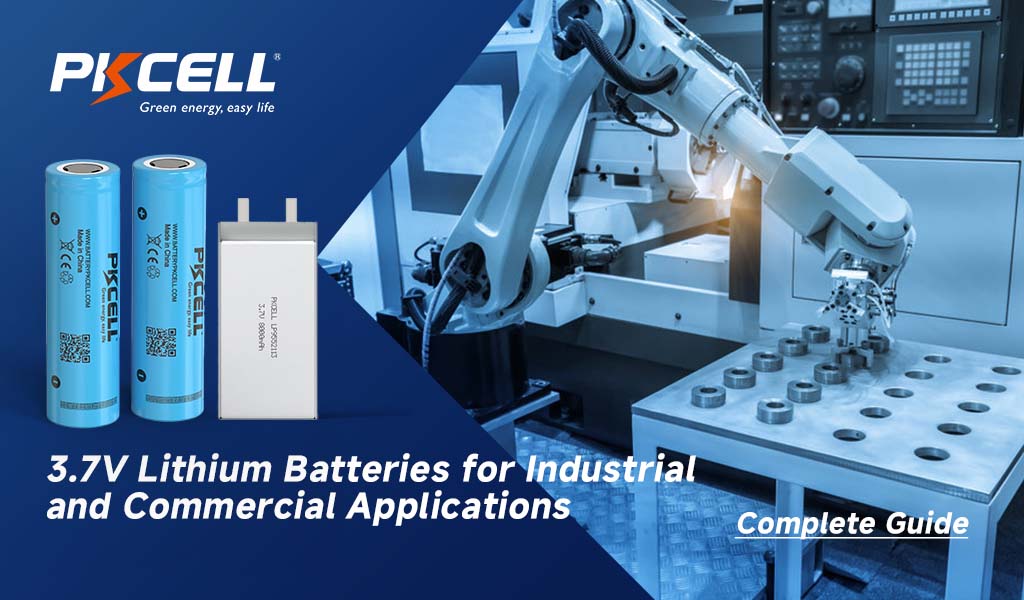
Introducción
3.7V lithium batteries have become a standard power source across many industries nowadays. From portable medical devices to IoT equipment, drones, and consumer electronics, this battery type delivers the right balance of energy density, voltage stability, and cycle life. This guide will explore what makes the 3.7V lithium battery unique, what industrial buyers should know, and how to compare different options for B2B procurement.
What is a 3.7V Lithium Battery?
A 3.7V lithium battery typically refers to a single-cell rechargeable Li-ion or Li-polymer battery. The 3.7V rating is the tensión nominal, which means the average voltage during discharge.
- Fully charged voltage: around 4.2V
- Cutoff voltage: around 2.75V–3.0V (depending on design)
- Chemistry: usually Lithium-ion (NMC, NCA, or LCO) or Polímero de litio
- Typical capacity range: 200mAh – 5000mAh for consumer cells, larger packs possible
For businesses, the importance lies not just in the voltage but also in:
- Consistency across batches
- Cycle life (300–1000 cycles typical, higher with LFP)
- Safety standards (UL, IEC, UN38.3 certifications)
Types of 3.7V Lithium Batteries
Lithium-ion (Li-ion, NMC / NCA)
- Widely used, high energy density
- Moderate cycle life (500–800 cycles)
- Good balance of cost and performance
Quote for PKCell 3.7V Li-ion Battery
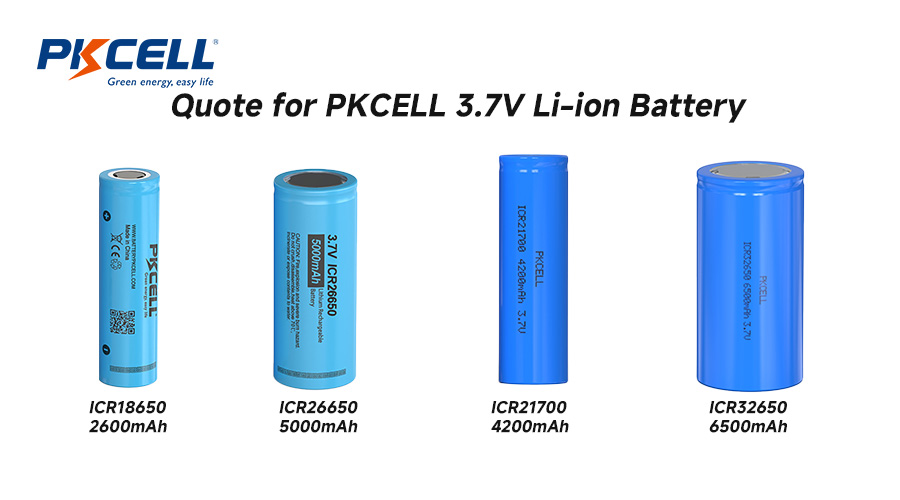
Lithium-polymer (LiPo)
- Flat, flexible pouch cells
- Preferred for slim devices like smartphones, wearables
- Slightly lower cycle life but excellent design flexibility
Quote for PKCell 3.7V Li-po Battery
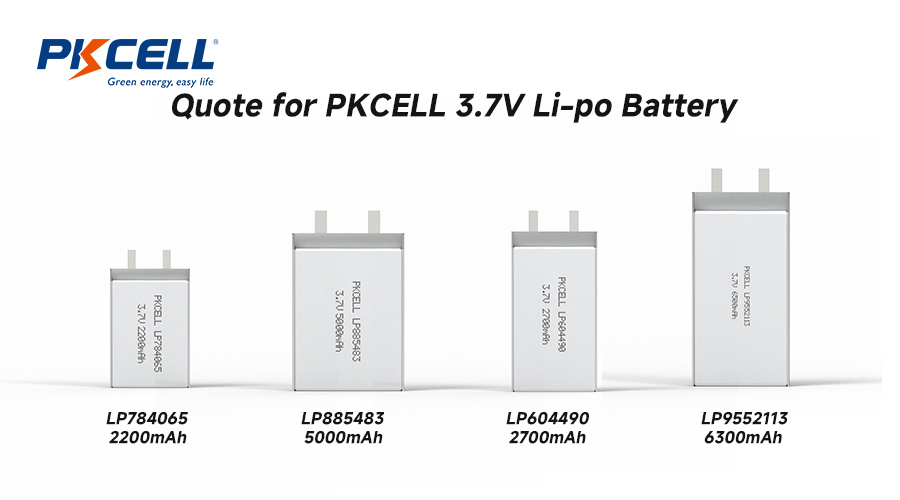
Lithium Cobalt Oxide (LCO)
- Very high energy density
- Shorter cycle life
- Common in consumer electronics, less so in heavy-duty applications
Why 3.7V Lithium Batteries are Widely Used
1. Alta densidad energética: Compared to NiMH or lead-acid cells, lithium batteries provide far more energy in a smaller package. This makes them ideal for compact devices like wearables and drones.
2. Stable Voltage Output: The 3.7V range is perfect for electronics that require a stable mid-range voltage. Many circuit boards are designed to operate efficiently within this range.
3. Largo ciclo de vida: Depending on the chemistry, a 3.7V lithium cell can deliver 300–1000 charge cycles before its capacity significantly drops, making it suitable for industrial and commercial reuse.
4. Versatility in Design: These cells are available in cylindrical, pouch, and prismatic formats, making them adaptable to custom battery packs for different industries.
Common Applications in B2B Markets
1. Consumer & Industrial Electronics: Smartphones, cameras, and tablets rely on 3.7V cells, but so do POS systems, portable scanners, and industrial handheld tools.
2. Productos sanitarios: Portable diagnostic devices, infusion pumps, and monitoring equipment often use certified 3.7V lithium cells where reliability and safety are non-negotiable.
3. IoT and Smart Devices: From smart locks to asset trackers, a compact, rechargeable 3.7V battery is often the best choice for balancing power with small size.
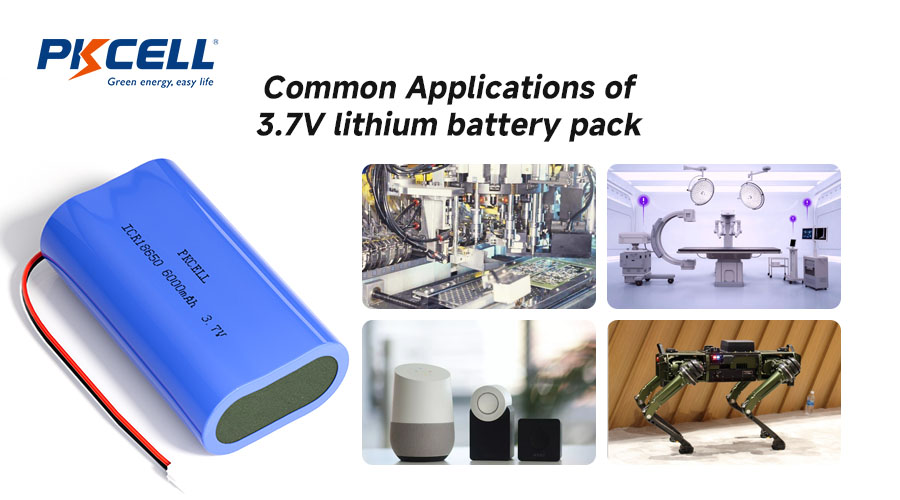
4. Drones & Robotics: En high discharge capability of certain 3.7V Li-ion cells makes them suitable for drones and robotic systems where weight and energy efficiency are critical.
5. Customized Industrial Equipment: Many OEMs prefer custom 3.7V battery packs built to match their product’s form factor, ensuring seamless integration.
Key Performance Factors for B2B Buyers
1. Capacity (mAh or Ah): The capacity determines how long the device can run before recharging. Industrial buyers should balance capacity vs. weight and size.
2. Continuous Discharge Rate (CDR): The continuous discharge rate is essential for high-drain devices like power tools or drones. Procurement teams should verify the CDR rating to ensure reliability.
3. Cycle Life: The cycle life of a battery is the number of charge–discharge cycles before the battery degrades significantly. Longer cycle life equals to lower total cost of ownership.
4. Safety Features: B2B buyers should look for protection circuits (overcharge, over-discharge, short circuit) and certifications (UL, IEC62133, UN38.3).
5. Customization: B2B users often need custom packs with specific connectors, casing, or PCM/BMS systems. Working with a manufacturer that supports customization is crucial.
Comparing 3.7V Lithium Battery Chemistries
| Química | Densidad energética | Ciclo de vida | Seguridad | Aplicaciones |
|---|---|---|---|---|
| Li-ion (NMC/NCA) | Alta | 500–800 | Moderado | Electronics, tools |
| LiPo | Medium-High | 300–600 | Moderado | Wearables, slim devices |
| LCO | Very High | 300–500 | Low-Moderate | Consumer devices |
| LMO | Medium | 500–700 | Alta | Medical, industrial tools |
Industrial Procurement Considerations
Supply Chain Reliability: A reliable supplier ensures consistent performance across batches, preventing costly recalls or replacements.
Compliance and Certifications: Industrial buyers must check for UN38.3, CE, RoHS, and IEC compliance for international shipping and safety assurance.
MOQ and Lead Time: For B2B procurement, understanding minimum order quantities (MOQs) and delivery schedules can help prevent production delays.
Long-Term Partnership: Battery sourcing is rarely a one-time purchase. Businesses benefit from a trusted long-term partner who can adapt to future product requirements.
Custom 3.7V Lithium Battery Packs
For many applications, a single cell isn’t enough. Battery packs combine multiple 3.7V cells in series or parallel to achieve higher voltage or capacity.
- Series connection (S): Increases voltage. Example: 2S = 7.4V
- Parallel connection (P): Increases capacity. Example: 2P doubles runtime
- PCM/BMS integration: Protects the pack from overcharging, short circuits, and overheating
Industrial buyers often require custom packs designed with unique dimensions, connectors, and safety circuits to match their product.
Customize Your 3.7V Lithium Battery Pack Now!
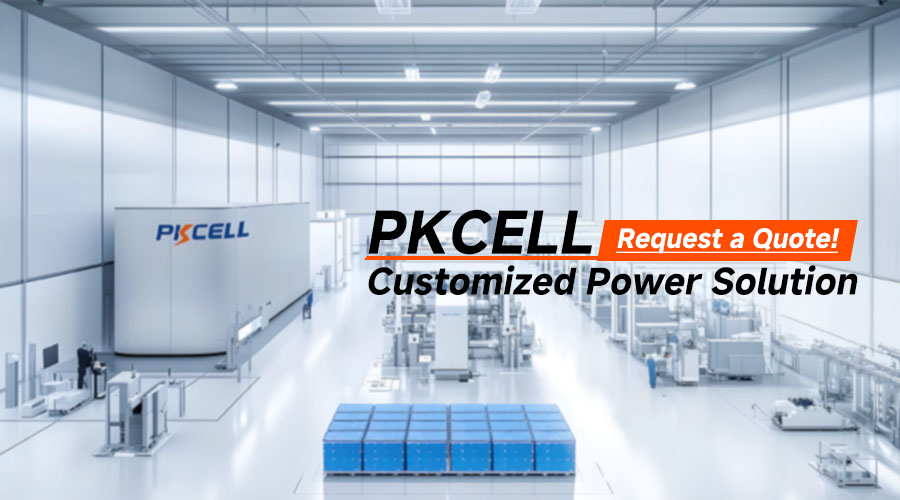
Future Trends in 3.7V Lithium Batteries
- Higher energy density: Advancements in NCA and solid-state lithium promise even lighter, longer-lasting cells.
- Improved safety: New separators and electrolyte formulas are reducing fire risks.
- Sustainability: Recyclable materials and second-life usage are becoming priorities for manufacturers and buyers alike.
- Custom engineering: More OEMs are requesting tailor-made packs rather than off-the-shelf cells.
Conclusión
En 3.7V lithium battery is more than a standard power cell—it’s the foundation for thousands of modern devices across industries. For B2B buyers, choosing the right chemistry, ensuring certification compliance, and working with a reliable supplier are essential steps in reducing long-term costs and risks.
Whether you’re an OEM engineer designing a new medical device, or a procurement manager sourcing batteries for industrial IoT solutions, a well-chosen 3.7V lithium battery partner can determine the success of your product.
FAQs
1. Is a 3.7V lithium battery the same as a Li-ion battery?
Yes. Most 3.7V lithium batteries are Li-ion cells. However, there are different chemistries (NMC, LCO, LMO, LiPo), each with unique properties.
2. How long does a 3.7V lithium battery last?
Typically 2–3 years or 300–800 cycles, depending on chemistry and usage. Industrial-grade cells may last longer with proper management.
3. Can 3.7V lithium batteries be customized?
Yes. Many manufacturers provide custom packs with added protection circuits, specific connectors, or unique shapes to fit industrial devices.
4. Are 3.7V lithium batteries safe for medical devices?
Yes, as long as they are certified (UL, IEC62133, UN38.3) and integrated with proper BMS/PCM for safety.
5. What’s the difference between 3.7V and 3.2V lithium batteries?
3.7V typically refers to Li-ion chemistries (NMC, LCO, LiPo), while 3.2V usually means LiFePO4 chemistry, which has lower energy density but higher safety and cycle life.

 Batería de litio recargable por USB
Batería de litio recargable por USB
